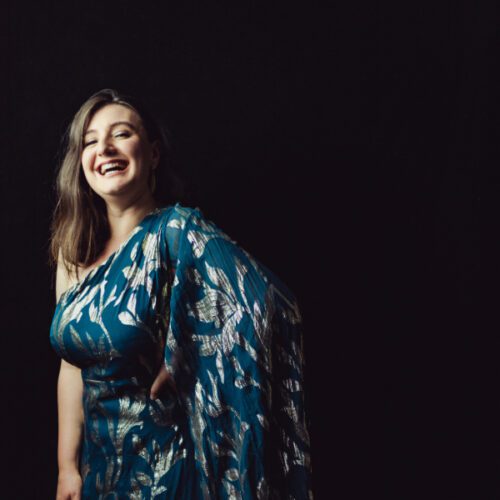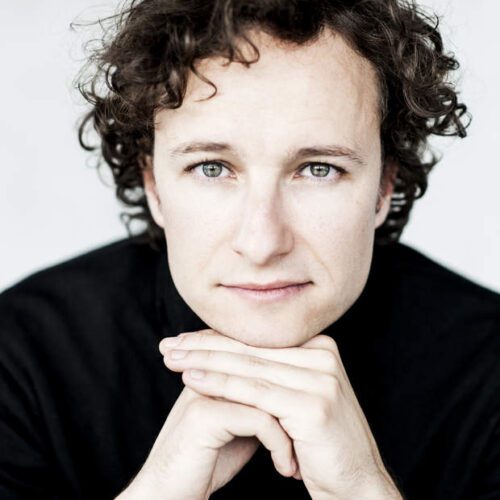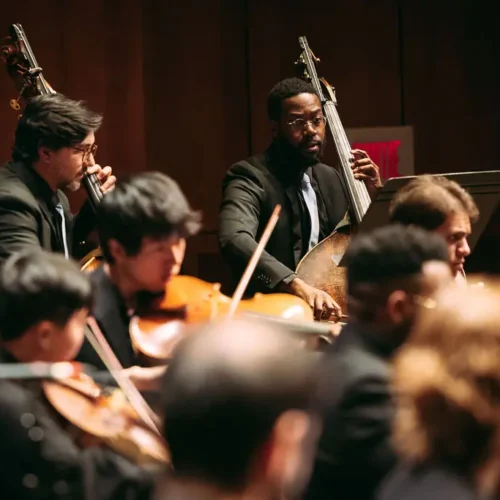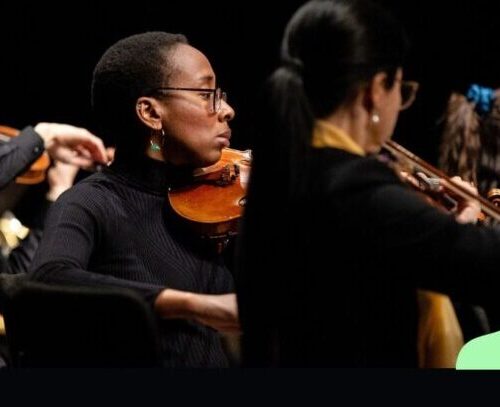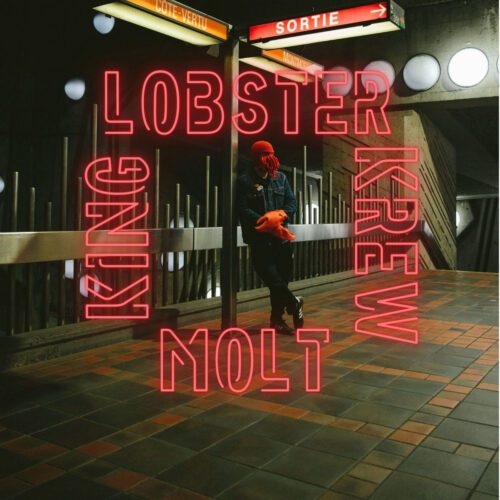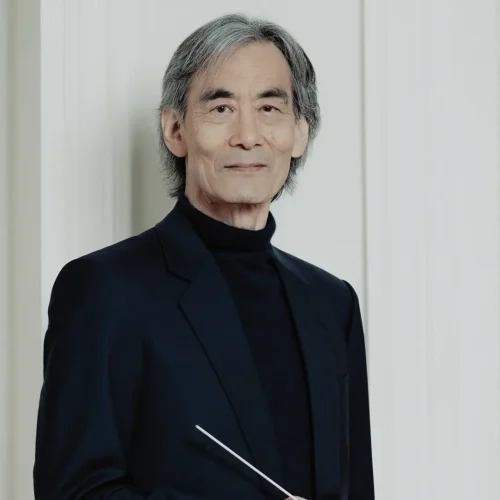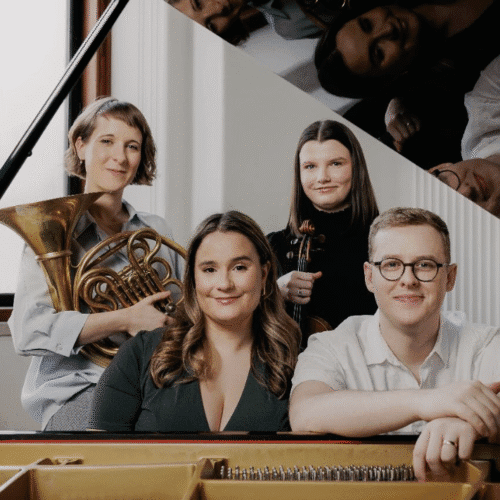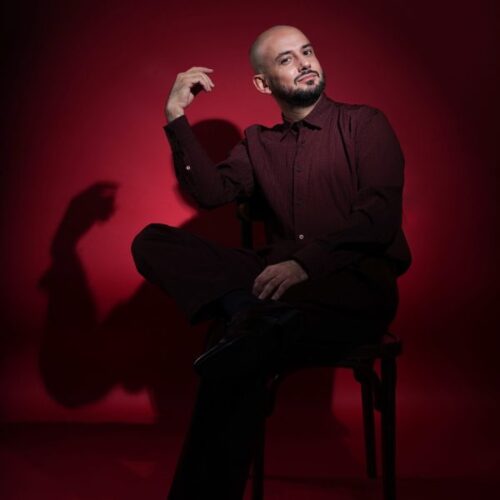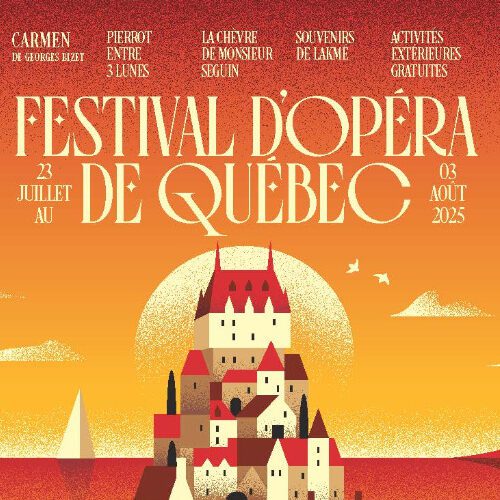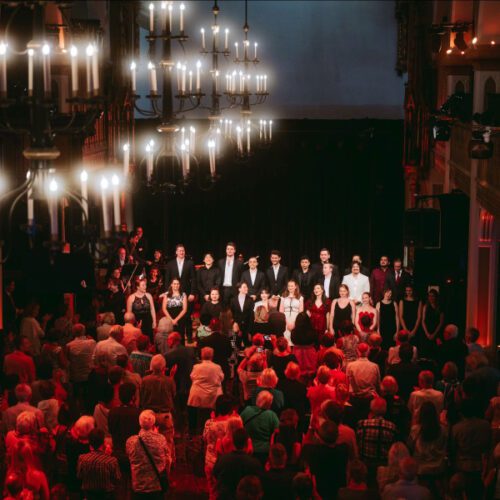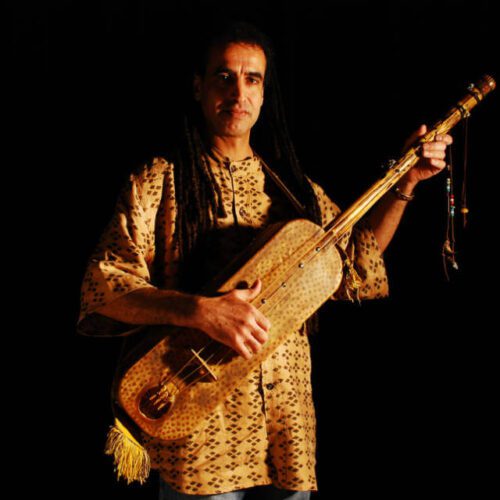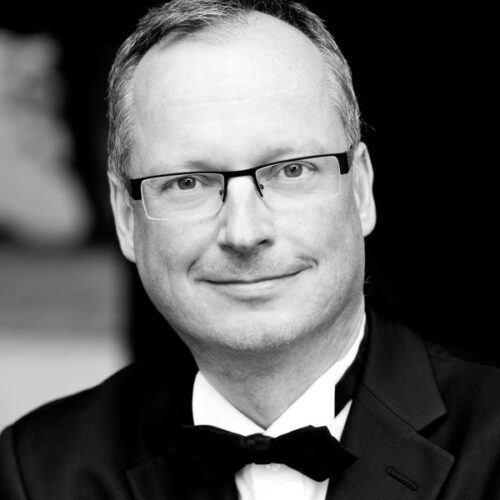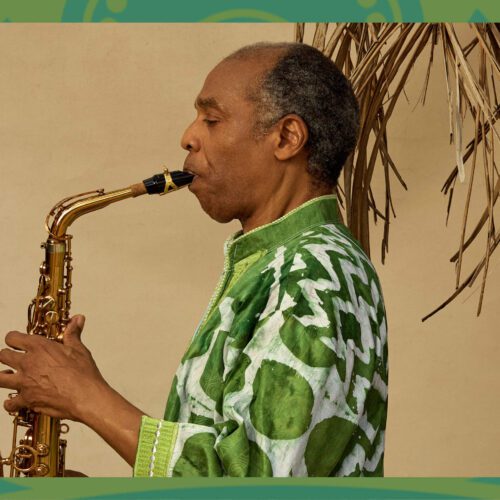Additional Information
To conclude its 2024-2015 season, Ensemble Caprice and its conductor Matthias Maute, in collaboration with Ensemble ArtChoral, present Bach’s St. John Passion, just in time for the Easter celebrations, as we enter the liturgical year in the midst of Lent. The Leipzig Kantor’s flagship work, alongside his other, larger choral St. Matthew Passion, the story of Christ’s Passion is magnified in this sacred opera, in which Bach’s music expressively and symbolically accompanies and supports the words of John, Pilate, Peter and Jesus. Alexandre Villemaire spoke to Matthias Maute about this work.
PAN M 360: Why did you choose to conclude Ensemble Caprice’s season with this Passion by Johann Sebastian Bach?
Matthias Maute: Bach’s St. John Passion is a work of storytelling, chorus and music of great depth, a true sacred opera featuring action supported by rich music, offering a powerful conclusion to the season.
You could say that with its drama and intensity, the musicians of Ensemble Caprice and Ensemble ArtChoral feel right at home!
PAN M 360: What is the story behind the creation of this iconic Bach work?
Matthias Maute: Johann Sebastian Bach composed The St. John Passion in 1724, shortly after his arrival in Leipzig, for performance at the Good Friday service at St. Nicholas Church. Based on the Gospel according to St. John, the work alternates recitatives, arias and choruses, creating a musical narrative that highlights the drama of Christ’s Passion. Reworked several times during Bach’s lifetime, this Passion reflects his commitment to combining theological depth with musical expressiveness.
PAN M 360: What was your first personal contact with the work, and what impressed you at the time?
Matthias Maute: As a musician, my first contact with this work was in an orchestra in the United States. Suzie LeBlanc sang the aria Zerfließe, meine Herze, and I played the flute part. That aria is a sublime, unforgettable moment.
PAN M 360: The St. John Passion is an oratorio, the closest thing to an opera in Bach’s catalogue. How is the story of Christ’s last moments musically staged in the structure of the work?
Matthias Maute: The St John Passion alternates recitatives, arias and choruses to convey the story with intensity. The recitatives tell the story, the arias express the emotions of the characters, and the choruses embody the crowd, reinforcing the drama. The orchestra supports the whole with expressive writing that underlines the key moments.
PAN M 360: Please introduce the soloists who will accompany you in this concert. What roles will they be playing?
Matthias Maute: Soprano Janelle Lucyk, a rising star on the Canadian scene, sings the role of Ancillae. Countertenor Nicholas Burns will take on the alto part in several arias. The role of Evangelist will be played by tenor Philippe Gagné, while baritone Dion Mazerolle will portray the apostle Peter and Pilate. Finally, the role of Jesus will be played by bass William Kraushaar.
PAN M 360: Just as in an opera, the chorus also plays an active role, both musically and dramatically. How does its participation fit into the narrative?
Matthias Maute: In the St. John Passion, the choir plays a central role, both narrative and dramatic. It embodies the crowd, intervening in the dialogues to express fervor, indignation or dismay. It also performs the chorales, which offer moments of reflection and contemplation, and the great opening and closing choruses, framing the work with solemnity and intensity.
PAN M 360: Are there any particular challenges, for both instrumentalists and singers, in interpreting the work?
Matthias Maute: Yes, performing the St John Passion presents challenges for both instrumentalists and singers. For the instrumentalists, mastering the wide variety of orchestral styles and textures, especially with early instruments such as the oboe da caccia, demands great precision. For the singers, the challenge lies in expressing deep emotions through vocally demanding recitatives and arias, while maintaining the clarity of the text. Moreover, the balance between soloists, chorus and orchestra must be constantly monitored to preserve the fluidity of the musical drama.
PAN M 360: What can you tell us about Ensemble Caprice’s upcoming season?
Matthias Maute: A colorful season awaits you, with three exceptional concerts at the Maison symphonique. The program includes Bach’s Magnificat, Mozart’s Mass in C, Mendelssohn-Bartholdy’s Violin Concerto, Beethoven’s Fifth Symphony, the first cantata of Bach’s Christmas Oratorio, and excerpts from Handel’s Messiah, all performed on period instruments. Complementing this, a series of concerts at the legendary 9th, and to open the season, a vibrant concert with Vivaldi on fire, again at the 9th.
In addition to being presented in Montreal on April 4 at the Maison symphonique, the concert will be presented in Quebec City at the Palais Montcalm on April 5.

